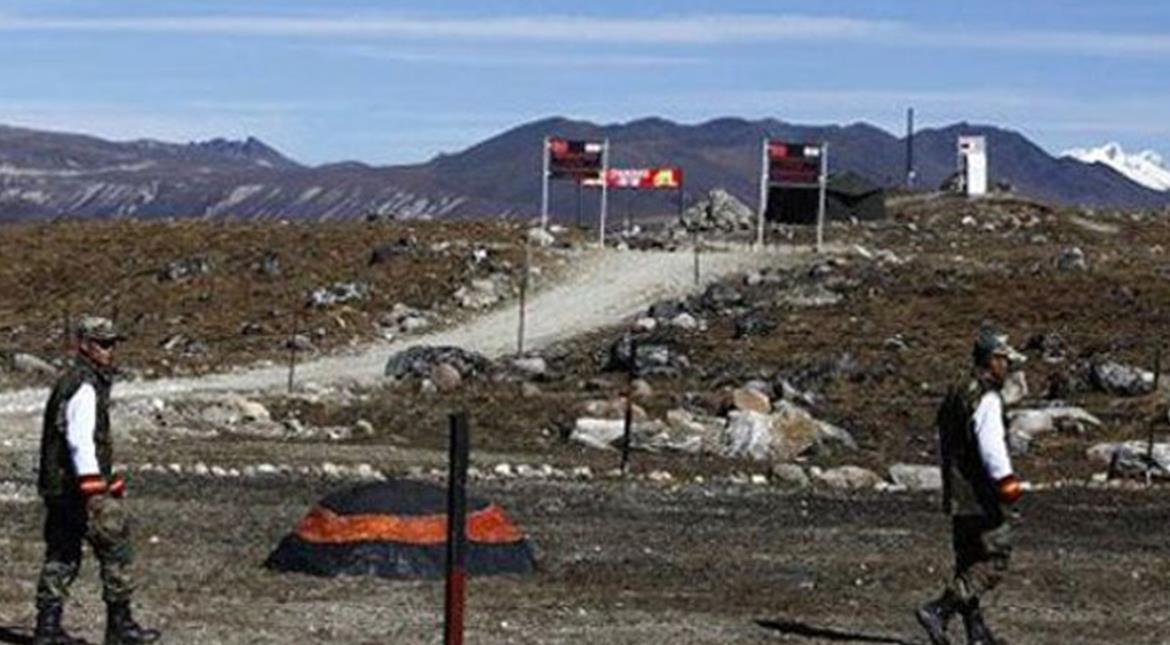Prime Minister Narendra Modi made several visits to China, apparently to keep Beijing in good humour, reduce tension between the two countries and to promote that vague thing called ‘confidence building’. The sincerity of the Prime Minister’s efforts to better Sino-Indian relations cannot be questioned. But what can be questioned is the response it has evoked from China. A report, for Different Truths.
China is clearly outmanoeuvering India in the diplomatic war to win over India’s neighbours. Recently, Prime Minister Narendra Modi made several visits to China, apparently to keep Beijing in good humour, reduce tension between the two countries and to promote that vague thing called ‘confidence building’. The sincerity of the Prime Minister’s efforts to better Sino-Indian relations cannot be questioned. But what can be questioned is the response it has evoked from China.
Let us look at the hard facts. After an eyeball-to-eyeball confrontation between the Indian and Chinese armies at Doklam last year for 73 days, the Chinese blinked first and withdrew their troops to positions they had held before they started building a road in Doklam that posed an immediate threat to the Chicken’s Neck or the narrow strip of land that connects mainland India to its north-eastern part. Everybody heaved a sigh of relief. But not for long.
China has recently admitted it is building fortifications at Doklam and warned India that New Delhi has “no business” to comment on construction activities going on in their territory. What exactly are these ‘constructions’? Satellite photographs have revealed that the Chinese have permanently occupied the North Doklam plateau. A new road is being built that will facilitate the entry of Chinese troops to South Doklam.
Besides, the Chinese have built observation posts, trenches, bunkers, about half a dozen helipads and a very tall observation tower. They have deployed a full mechanised regiment, armoured vehicles, besides bringing heavy road-building machinery. But this is not all. China has started constructing three new airports in Tibet, each at an altitude of over 3,900 metres (nearly 11,000 feet). It may be recalled that China started building airports in Tibet right from 1956 at Damxung, about 166 kms from capital Lhasa. Today, it has top five airports in Tibet, besides airstrips.
Asked about the satellite photos of Dokalm, a spokesperson of the Chinese Foreign Ministry bluntly said: “China is exercising its sovereignty in its own territory. It is legitimate and justified. Just as China will not make comments about Indian construction of infrastructure on India’s territory, we hope other countries will not make comments on China’s construction of infrastructure on its territory.”
The claim that China recognised India’s right to exercise sovereignty in its own territory is not true. When India announced its programme of building Agni missiles having a range of eight thousand plus kms, China protested loudly. A year and a half ago, on January 5, 2017, to be precise, the state-run Global Times commented that India had ‘broken’ UN limits on nuclear arms and long-range ballistic missiles. It argued that Pakistan should also be accorded the same ‘privilege’. This was after India had successfully test-fired the Agni-V missile.
In Sri Lanka again, India has been outmaneuvered by China. A Chinese company had built the Hambantota seaport in the southernmost tip of Sri Lanka. In no time Sri Lanka found that it could not repay the huge loan, estimated to be $1.1 billion that Sri Lanka had taken. Ultimately, it had to sell 70 per cent equity of the Hambantota project to the Chinese and make them part owners. Hambantota is strategically located because it is close to an important commercial sea route. The initial arrangement was that Sri Lanka will only lease the port to the Chinese for 99 years. Now, the Chinese are not lessees but owners.
To neutralise partly the advantage gained by China with its acquiring of the Hamabantota port, India offered to Sri Lanka to buy the Mattala airport, some 40 kms north-east of Hambantota. Mattala is known to be the world’s ‘emptiest airport’. It used to operate only one international flight. India was ready to spend $300 million to run the Mattala airport with an area of 2,000 acres because the Chinese takeover of Hambantotal worried New Delhi that it would ultimately be a hub for the Chinese navy in the Indian Ocean.
India’s proposal to run the Mattala airport was discussed between Prime Minister Narendra Modi and his Sri Lankan counterpart Ranil Wickremesinghe in November, 2017. Positive signals were reported to have emanated from the Sri Lankan side. Everything seemed to be going on well. It raised the hackles of Beijing. It realised that if India had a foothold at Mattala, New Delhi will be virtually breathing down the neck of the Chinese at Hambantota.
The opposition alliance in the Sri Lankan parliament led by former Prime Minister Mahinda Rajapaksa’s son vehemently opposed leasing out the Mattala airport to India, arguing that the Sri Lankan government must not allow the country “to be a pawn in international power politics.” It may be recalled that during Rajapaksa’s prime ministership, Sri Lanka’s foreign policy took a distinct tilt toward China vis-à-vis India. One of the reasons of Rajapaksa’s defeat in the next general elections was believed to be his pro-Chinese policy. Anyway, after the opposition furore, nothing has been heard of the proposal to lease out Mattala to India. The deal seems as good as dead. China has successfully prevented India’s entry into Mattala.
Next comes Seychelles. It is an archipelago of 115 big and small islands south west of Sri Lanka. It is strategically located on an important sea route. India wanted to build a naval base in one of the islands – Assumption. In 2015, when Prime Minister Modi visited Seychelles he persuaded the authorities there to agree to the Indian proposal. But just a week ago, on the eve if his India visit, Seychelles president Danny Faure said the proposed Indian project at Assumption “will not move forward” because of “growing political opposition”. It was a public snub to India delivered at whose instance may be easily imagined.
Thereafter comes the Maldives. Ever since Mohamed Nasheed, the first democratically elected president in 30 years, was ousted in a military coup (officially, he resigned) and thrown out of the country, India’s relations with the island nation have been steadily deteriorating. The government there is dictatorial. It has put behind bars the entire opposition and rules with an iron fist. It has recently cancelled the work permits of hundreds of Indian workers who have been left stranded. External Affairs Minister Sushma Swaraj has taken up the matter with her Maldives counterpart. As Indian influence on Maldives has waned, Chinese influence has grown. Here again, China has successfully turned one of our small neighbours against us. It is time New Delhi took a fresh look at its neighbourhood diplomacy.
Barun Das Gupta
©IPA Service
Photo from the Internet





 By
By
 By
By
 By
By